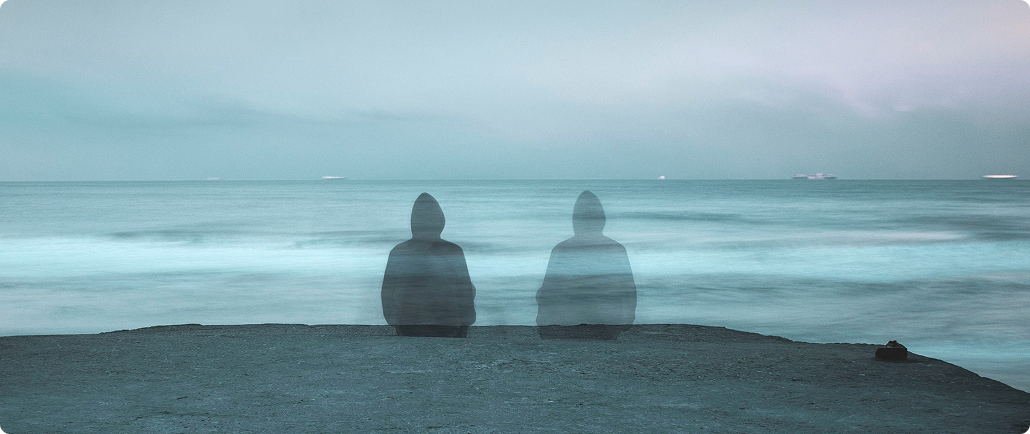
SAD: How to Recognize Seasonal Affective Disorder

One-on-One Counseling in Arizona for Life's Challenges
Every day is a chance to start over. Our trauma-informed therapists will meet you where you are — in person or online — so you can process your experiences and become the person you want to be.
We know now that depression often appears in the form of constant feelings of despair or emptiness. However, it can appear in significantly different forms in each person it affects. Many don’t know that they have it or that they can effectively treat whatever it is that they’re feeling.
Those that notice their depressive episodes are cyclical and predictable can put a name to their depression: Seasonal Affective Disorder.
How To Recognize Seasonal Depression
Seasonal Affective Disorder, also known as “SAD” or “Seasonal Depression,” is often diagnosed as “Major Depressive Disorder (MDD) with seasonal patterns”. Someone dealing with SAD experiences a depressive episode around the same time every year. It’ll start and stop consistently with the changing of the seasons.
Most people with SAD are affected by winter, but any season can trigger SAD. During the rest of the year, the depression is either far less severe or non-existent.
Symptoms Of Seasonal Affective Disorder
Symptoms of SAD resemble those of most other depressive disorders, such as feeling distant or dissociated from life and relationships and s loss of interest in things that once brought you joy. Some other common symptoms of SAD and depression are:
- Sleeping too much
- Fatigue
- Weight gain and carbohydrate cravings
- Irritability and anxiety
- Suicidal or self-harming thoughts
In order to be diagnosed with SAD, these symptoms must appear for most of the day, most days during a particular span of time (such as only winter or only summer). This pattern must be present for at least two years.

Winter Fatigue
Feeling “down” in the winter happens to a lot of people, as the lack of vitamin D from the sun has an effect on all humans on some level. “Winter fatigue” is the common name for SAD that occurs in the winter.
However, winter fatigue is a real depression diagnosis. It presents itself in “classical” depression symptoms, such as sleeping too much and lethargy. Typically, it starts with mild symptoms that occur when the weather cools down and it gets cloudy every day in the fall and early winter. Symptoms worsen as winter goes on, and begin to alleviate in the spring.
Winter fatigue is more common in areas with harsh winter weather, but can still happen to those in mild climates
Summer Seasonal Depression
SAD in the summer can look a lot different than the winter. It generally takes on the anxiety-driven symptoms of depression, like irritability and agitation, insomnia, and lack of appetite.
While summer seasonal depression doesn’t look like the picture most people think of for depression, it is still diagnosed as such. The sun and heat affect people through the same brain pathways as the darkness and cold.
Who Is At Risk For SAD
Genetics is always the biggest risk factor for developing some form of depression. Family history of depressive disorders makes a person far more likely to develop any given kind of depression—including SAD.
Though seasonal depression can affect people across all climates and countries, those that live further from the equator are more likely to develop it. The drastic differences of summer and winter can be enough to trigger a seasonal depressive episode.
Additionally, those who already have a depressive disorder or other types of mental health and behavioral disorders, are at a higher risk for experiencing SAD.
Bipolar Disorder
SAD and bipolar disorder seem to have a special relationship. Bipolar is a type of depression with severe depressive episodes and ecstatic mania episodes. Both types of episodes vary in length, and one can be more dominant in terms of length and frequency.
Often, these patterns of mania and depression follow a seasonal rhythm. In fact, SAD is often considered a subtype of bipolar depression due to the swing in a person’s mental state.

What Causes SAD
Depression is generally caused by a lack of certain mood-regulating neurotransmitters like dopamine and serotonin. They are responsible for feeling pleasure, happiness, reward. When the brain doesn’t release them, it causes sadness and, eventually, depression.
Circadian Rhythm
Your body naturally has a rhythm of sleepiness and wakefulness called the circadian rhythm. Changes in season affect everyone’s rhythm, but this disruption is much more pronounced for those who are at risk for SAD.
Those that have SAD already have difficulties regulating these mood-regulating hormones, but it might not be apparent until something environmental triggers it. For winter seasonal depression, shorter, darker, colder days, can stimulate the imbalances responsible for a depressive episode.
In the case of summer seasonal depression, longer, hotter days, trigger feelings of irritability, agitation, and sleeplessness.
Melatonin Production
Some research has found that people with SAD, particularly winter fatigue, have higher levels of melatonin. Melatonin is a chemical in the brain that, when released, puts you to sleep. Doctors are still unsure why this chemical shows up more in patients with SAD, but it appears to be a major contributing factor.
The Sun, Vitamin D, and Serotonin.
Sunlight is a strong influencer in the production of serotonin in that it stimulates the chemical processes required to produce it. Less sunshine, therefore, means less serotonin.
Vitamin D is also necessary for mood regulation, as low levels have been heavily linked to depression.

What To Do If You Are Struggling With SAD
As with other forms of depression, SAD can be treated through medication and therapy. There are also additional, practical means to lessen the impact of it, particularly with winter fatigue.
Light Therapy
You can trick your brain pretty easily. If you can’t get natural sunlight, store bought is just fine. Light therapy involves being in a room with a bright white light that mimics sunshine. Your brain thinks that you’re in the sun, producing more Vitamin D, lowering melatonin production, and increases serotonin levels.
Do this during the daytime, so that you continue natural sleep cycles. Harvard Health recommends only doing this for about 30 minutes at a time with a 10,000 lux light.
Vitamin D
In the winter, vitamin D supplements can also be beneficial. Light therapy helps with a person’s circadian rhythm, but not their biochemical processes. Adding Vitamin D through diet or supplementation can alleviate symptoms of winter fatigue.
Therapy And Counseling
Professional licensed therapists are always a smart resource to use to guide you through a depressive episode. They may be able to recommend medication, or they can help treat it though other methods.
Inner Balance Counseling knows that depression and SAD are nuanced, and require evidenced-based care. If you’ve noticed a pattern of seasonal depression, request a consultation today. Feeling better is just a click away.
Related blog articles
Sign up for our newsletter
Sign up with your email address to receive news and updates.
Get started
Request a consultation

-03%201.png)




